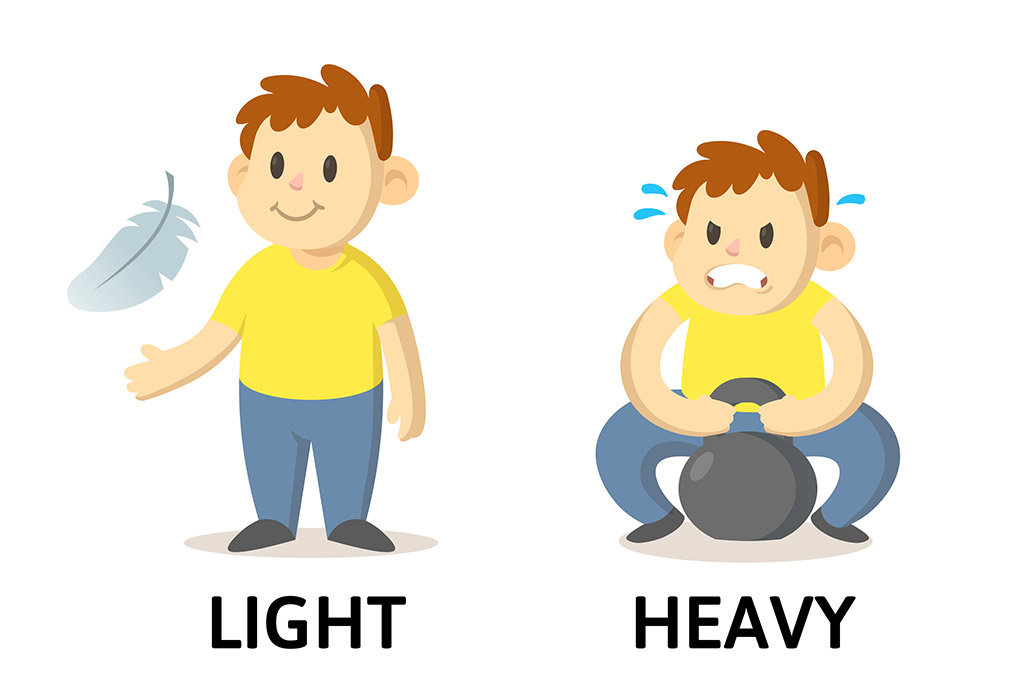How Heavy Is The Stanley Cup? Exploring The Weight Of Hockey's Ultimate Prize
Have you ever watched a hockey team celebrate their big win, seeing them hoist that famous trophy high above their heads? It's a truly powerful moment, is that. Everyone wonders about the sheer joy, the years of hard work, and just how much effort it takes to lift such a celebrated item. A big question that often pops up in people's minds is, "How heavy is the Stanley Cup?" It’s a pretty common thought, actually.
When we talk about something being heavy, we mean it possesses great weight, a characteristic defined by its mass. The Stanley Cup, in that sense, is truly heavy. It's not just a piece of metal; it’s a physical representation of a long season, tough games, and a whole lot of dedication. That trophy, you know, it feels like it holds all those moments, too it's almost.
So, what’s the real scoop on the Cup's weight? Beyond the numbers, there's a whole story about its make-up, its history, and what it feels like for those lucky enough to raise it. We're going to get into all of that here, giving you a better picture of this very special prize. You'll see, it's more than just a measurement.
Table of Contents
- The Stanley Cup: A Trophy Like No Other
- Unpacking the Actual Weight: The Numbers
- Beyond the Pounds: The Symbolic Weight
- How Does the Stanley Cup Compare to Other Trophies?
- Frequently Asked Questions About the Stanley Cup
- The Enduring Legacy of a Heavyweight Champion
The Stanley Cup: A Trophy Like No Other
The Stanley Cup is quite special among sports trophies, you know. It has a long, rich history, going back to 1892. Lord Stanley of Preston, who was Canada's Governor General at the time, donated it. He wanted to create a challenge trophy for Canada's top amateur hockey club. It quickly became the ultimate prize for professional hockey, which is pretty cool.
What makes it truly unique, perhaps, is the tradition of engraving the names of every winning player, coach, and management member onto its bands. This means the Cup grows taller over time, with new bands added as old ones fill up and are retired to the Hockey Hall of Fame. It’s a living record of hockey history, you see, which is honestly quite something.
This trophy is also unlike any other because it gets to spend time with the players who win it. Each player on the winning team usually gets a day with the Cup during the summer after their victory. This tradition lets them share the prize with their hometowns, their families, and their communities. It truly connects the players to the fans in a very personal way, in a way.
More Than Just Metal: The Cup's Unique Design
The Stanley Cup isn't just a single, solid piece of metal. It's actually made up of several parts. There's the top bowl, which is the original trophy, and then a series of five bands below it where all the names are stamped. This design is why its weight can feel so substantial, you know, because it's built up over the years.
The Cup stands about 35.25 inches tall and weighs around 34.5 pounds. That's a fair bit of mass to hold up, especially when you're jumping around in celebration. The materials themselves are mostly silver and nickel alloy, giving it that shiny, impressive look. It's a pretty strong structure, too, built to last through many celebrations, and stuff.
Its design has changed a few times over the years to accommodate more names. The current version, sometimes called the "Presentation Cup," is the one you see players lift. It's a truly grand object, symbolizing so much history and triumph. So, it's not just a cup; it's a whole collection of stories, you know, built piece by piece.
The Journey of the Cup: A Summer of Travel
After a team wins the Stanley Cup, it doesn't just sit in a trophy case somewhere. Oh no, it goes on a grand tour. This tradition, where each player gets a day with the Cup, means it travels all over the world. It has been to many different countries, visited countless cities, and seen all sorts of interesting places. It's almost like a celebrity itself, that.
This constant movement, and the fact that it's always accompanied by a Hockey Hall of Fame Keeper, shows just how precious it is. The Cup has been to weddings, baptisms, even just quiet backyard barbecues. It's been filled with everything from champagne to cereal, too it's almost. This summer travel adds to its story and, perhaps, its perceived weight, as it carries so many shared memories.
Every time a player hoists it in their hometown, they're not just lifting metal; they're lifting the hopes and dreams of their community. It's a very personal moment, really, for them and for everyone around them. This unique journey truly makes the Cup more than just a trophy; it makes it a symbol of shared success and pride, and so on.
Unpacking the Actual Weight: The Numbers
Let's get down to the actual measurement of the Stanley Cup. The official weight of the current Stanley Cup, often called the "Presentation Cup," is around 34.5 pounds. To give you a better idea, that's roughly the weight of a fairly large toddler or a couple of bowling balls. It’s a significant amount of mass to be holding over your head, especially when you’re tired from a long game, obviously.
This weight comes from its construction. The Cup is made from a silver and nickel alloy, which gives it its sturdy feel and lasting shine. When we talk about something being heavy, as in having great weight and being characterized by mass, the Stanley Cup fits that description perfectly. It truly is a substantial object, pretty much.
The Cup also stands at about 35.25 inches tall. So, it's not just heavy; it's also quite tall. This combination of height and weight means it has a rather high center of gravity, which can make it feel even more unwieldy when you try to lift it. It’s not just a straight lift; there’s a balance to it, too, you know.
The Top Bowl and Bands: Breaking Down the Components
The weight of the Stanley Cup is distributed across its different parts. The top bowl is the oldest part, and it contributes a good portion of the overall weight. Below the bowl are the five permanent bands, which are where the names of the winning teams and players are engraved. These bands are made of the same metal alloy, adding to the total mass. Basically, it's a layered structure.
Each time a new team wins, their names are added to one of these bands. Over time, as a band fills up, it's removed and retired to the Hockey Hall of Fame, and a new, blank band is put in its place. This system keeps the Cup from getting too tall or too heavy, though it still remains a weighty object. It’s a clever way to keep the tradition going, really.
So, when you see a player lifting the Cup, they are holding a trophy that has been carefully constructed and maintained over many, many years. It’s not just a single piece; it’s a collection of history, literally built layer by layer. This makes its weight, both physical and symbolic, even more impressive, as a matter of fact.
Why Does It Feel So Heavy?
Even though 34.5 pounds might not sound absolutely huge to some, many players say the Stanley Cup feels incredibly heavy when they lift it. There are a few reasons for this. First, its shape and height make it awkward to hold. It’s not a compact item; it’s tall and a bit top-heavy, which means you have to use more strength to keep it steady. It's not like lifting a dumbbell, you know.
Second, the moment itself adds to the perceived weight. Imagine the adrenaline, the excitement, the exhaustion after a long, grueling playoff run. When you finally get to lift that trophy, the emotional weight of the moment can make the physical weight feel even greater. It’s a culmination of years of dreams, pretty much.
And then there's the sheer joy and relief. That burst of emotion can actually make your muscles feel a bit wobbly, too. Lifting the Cup, one might say, is a serious workout, the kind of effort someone planning their weight lifting routines with an app like Hevy might appreciate. It truly tests your strength, both physical and mental, at the end of the day.
Beyond the Pounds: The Symbolic Weight
While the actual weight of the Stanley Cup is a fact we can measure, its symbolic weight is far greater. For a hockey player, this trophy represents a lifetime of dedication, sacrifice, and relentless effort. It’s the ultimate reward for countless hours spent on the ice, early mornings, and late nights. That feeling, you know, it’s truly immeasurable.
Every name etched onto its bands tells a story of perseverance and triumph. When a player lifts the Cup, they are not just holding metal; they are holding the hopes of their team, their city, and every fan who has cheered them on. It's a very powerful connection, that, a link to generations of hockey heroes and their struggles and victories.
This symbolic weight is what makes the Stanley Cup so special. It’s why players often say it feels heavier than they expected, or why they struggle to lift it, even if they are incredibly strong athletes. It’s the weight of history, of dreams, and of collective joy and pain, all rolled into one magnificent prize, in a way.
A Lifetime of Dreams in Your Hands
For many hockey players, winning the Stanley Cup is the dream they've had since they were little kids. They picture that moment, you know, lifting it high, feeling the roar of the crowd. When it actually happens, it’s an overwhelming experience. All those years of practice, all the injuries, all the sacrifices finally pay off. It’s truly a moment of pure bliss, honestly.
Holding the Cup means you've reached the absolute peak of your sport. It means you've been part of a team that achieved something truly extraordinary. That feeling, that sense of accomplishment, is what gives the Cup its incredible emotional weight. It’s a very personal connection, you know, to all the hard work that came before.
So, when you see players struggling a bit to lift it, it’s not just about the 34.5 pounds of metal. It’s about the 30-plus years of dreaming, working, and striving that led to that single, amazing moment. It’s a physical representation of an entire career’s worth of effort, basically, which is a lot to carry.
The Physical Feat of Lifting the Cup
Lifting the Stanley Cup is definitely a physical feat, especially for the first player to hoist it after the final buzzer. They often grab it with both hands, muscles straining, to raise it above their head for the crowd to see. It’s a powerful image, one that shows both strength and pure elation. You can see the effort, can't you?
The awkward shape, as mentioned, plays a big part. It’s not balanced like a weight you’d lift in a gym. You have to really brace yourself and use your core strength to keep it steady. Many players, exhausted from the game, might even stumble a bit under its weight, which is perfectly understandable. It’s a challenge, even for top athletes, that.
This physical struggle, however small, just adds to the legend of the Cup. It shows that even the strongest athletes are tested by its presence. It makes the moment feel even more real and hard-earned. It's a testament to the fact that achieving greatness often requires pushing your limits, you know, both physically and mentally.
How Does the Stanley Cup Compare to Other Trophies?
When you look at major sports trophies, the Stanley Cup stands out, not just for its history but also for its physical presence. For instance, the NFL's Lombardi Trophy, given to the Super Bowl champions, weighs about 7 pounds. That’s significantly lighter than the Stanley Cup, right?
The NBA Championship trophy, the Larry O'Brien Championship Trophy, is around 14.5 pounds. The World Series trophy in baseball is about 30 pounds, which is closer to the Stanley Cup's weight but still a bit lighter. The FIFA World Cup trophy, arguably the most famous soccer prize, is about 13.6 pounds, made of 18-carat gold. So, the Stanley Cup is definitely on the heavier side among these famous awards, pretty much.
This comparison helps put the Stanley Cup's 34.5 pounds into perspective. It really is one of the heavier and taller major sports trophies out there. This physical bulk adds to its imposing nature and the sense of accomplishment that comes with lifting it. It's a truly substantial prize, you know, in every sense of the word.

Teach Kids About The Concept of Heavy & Light Objects

How to Take Care When Lifting Heavy Objects | HubPages

Teach Kids About The Concept of Heavy & Light Objects